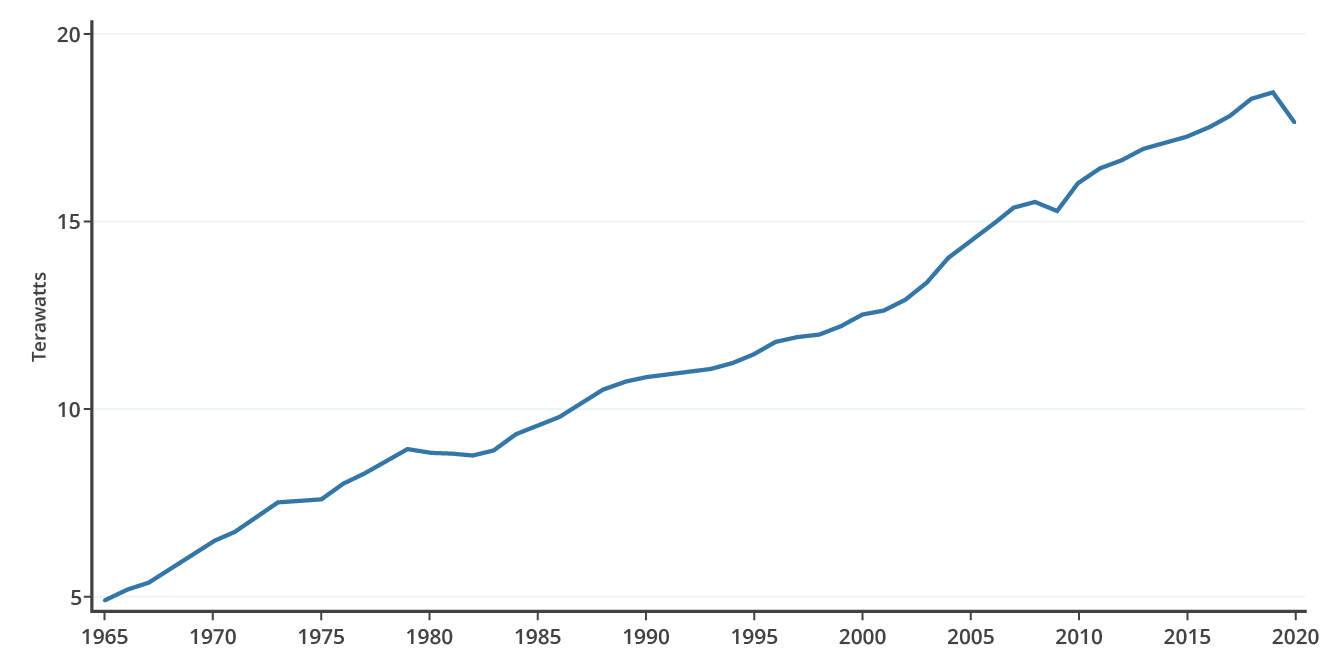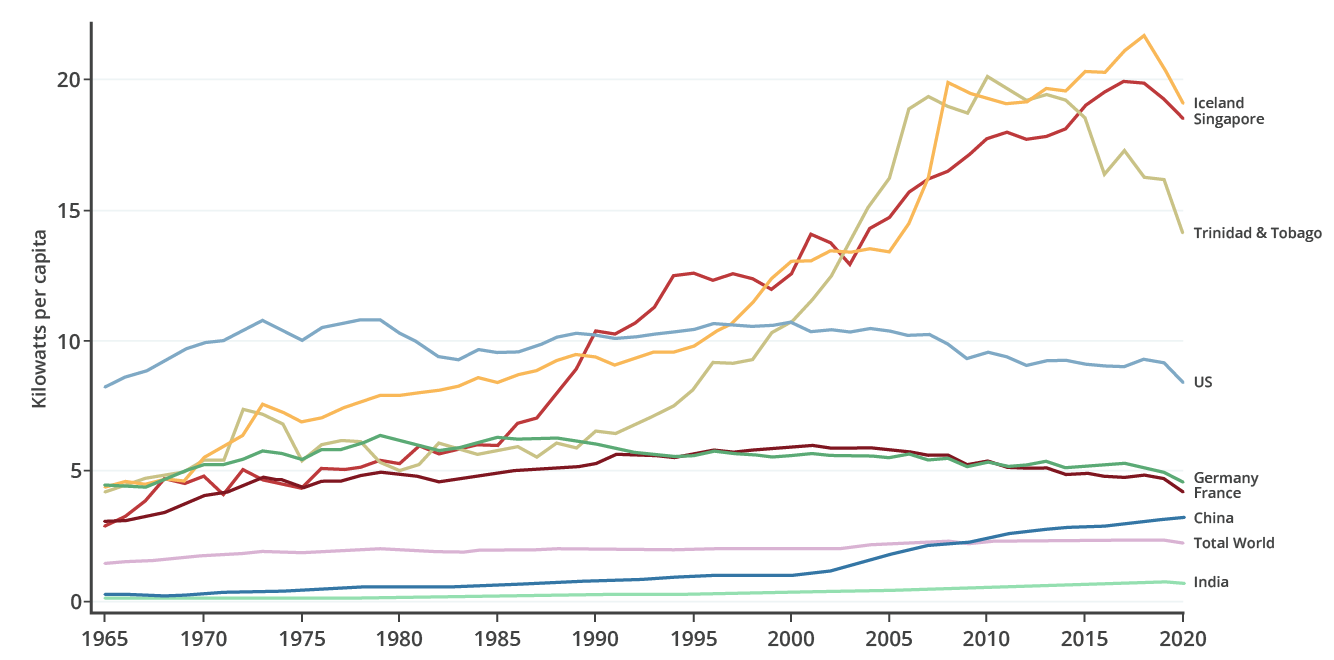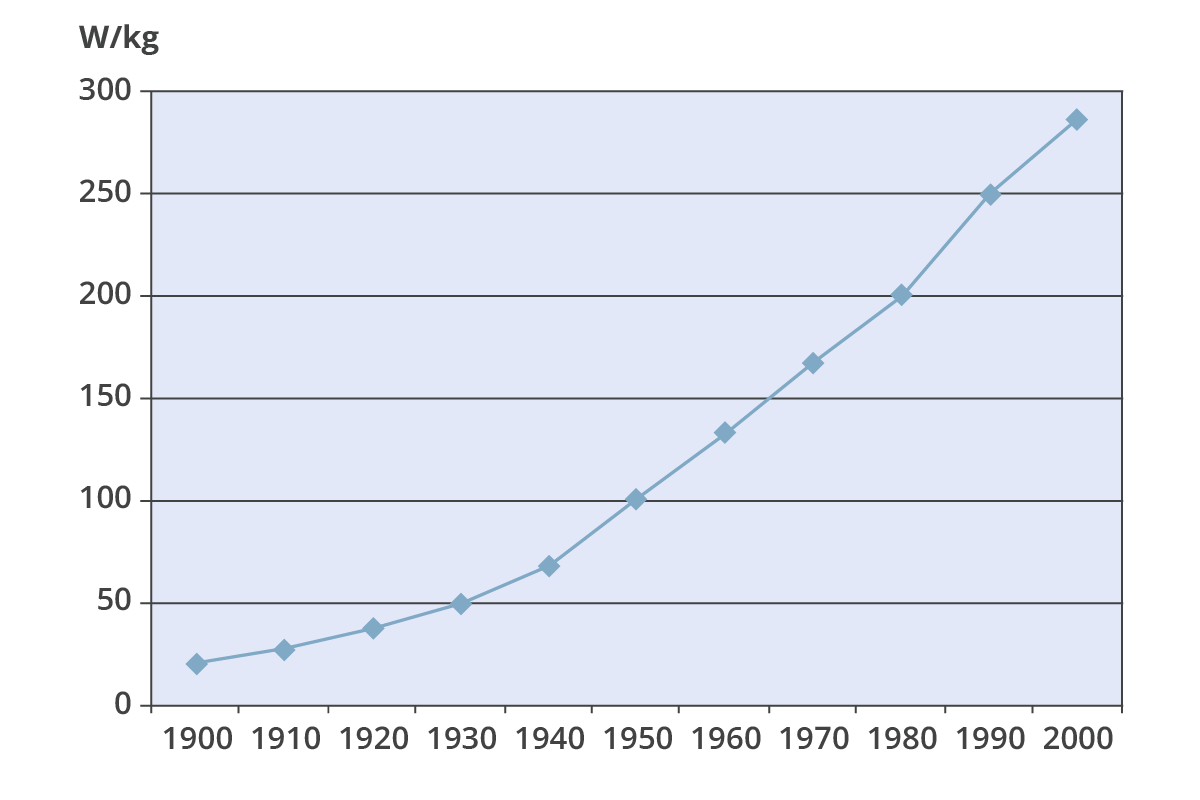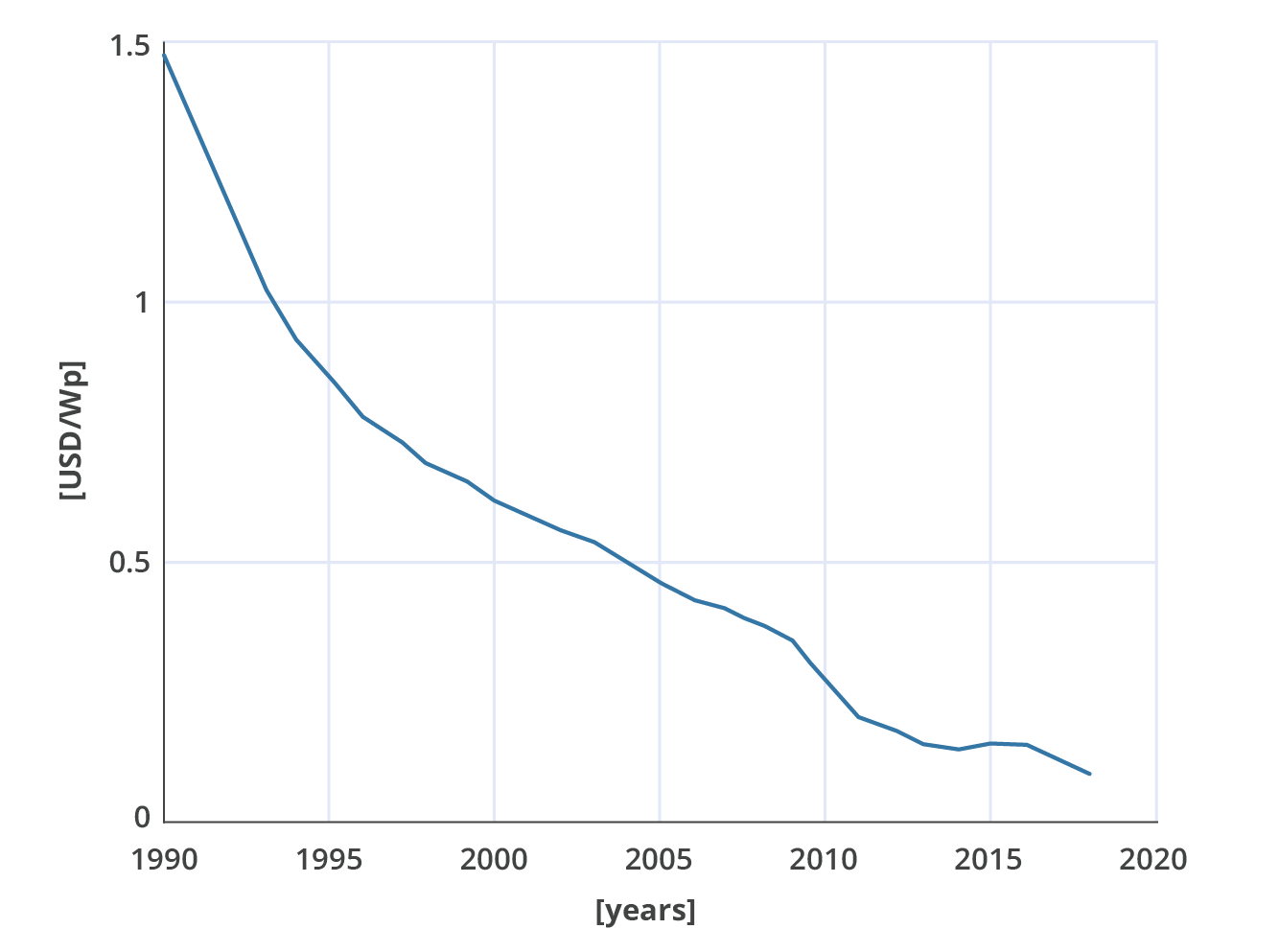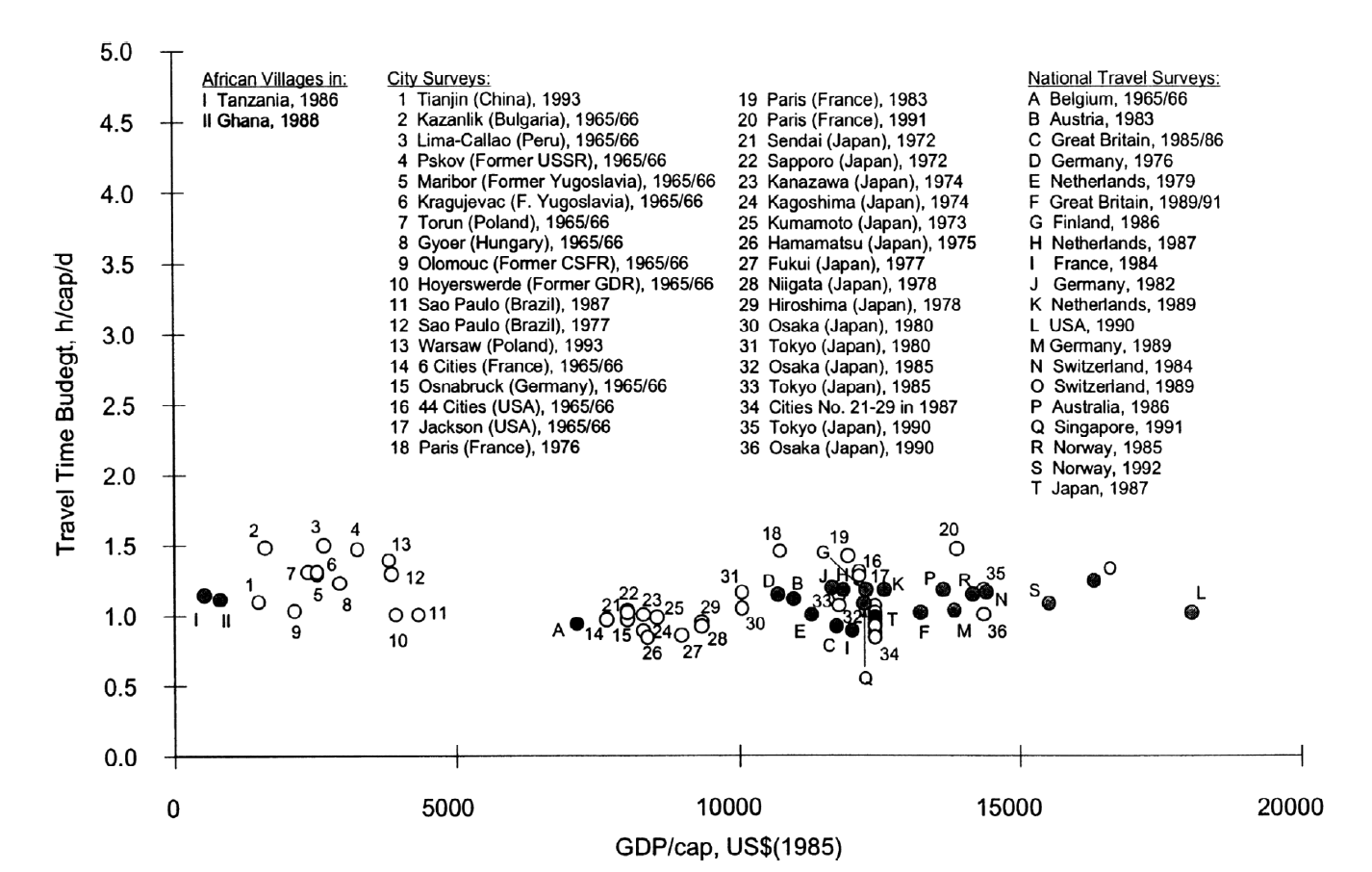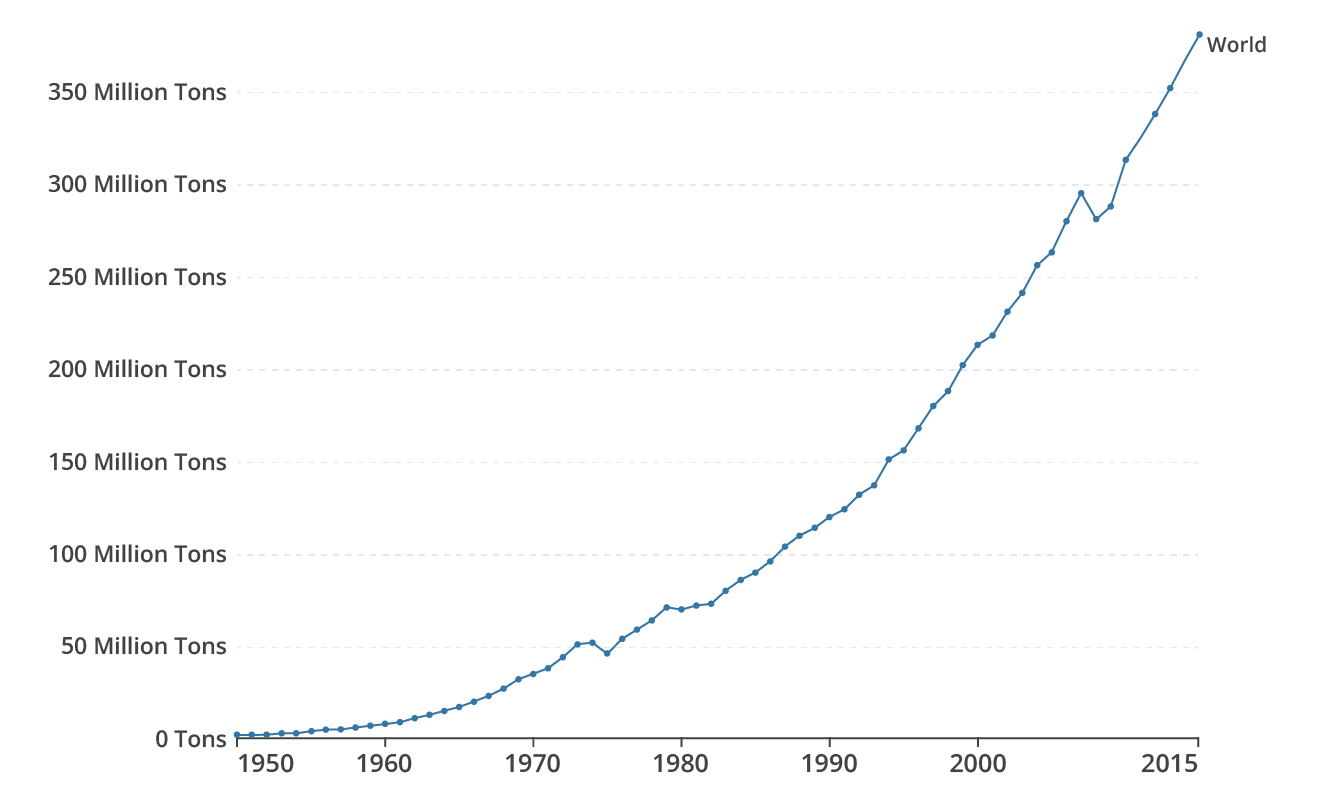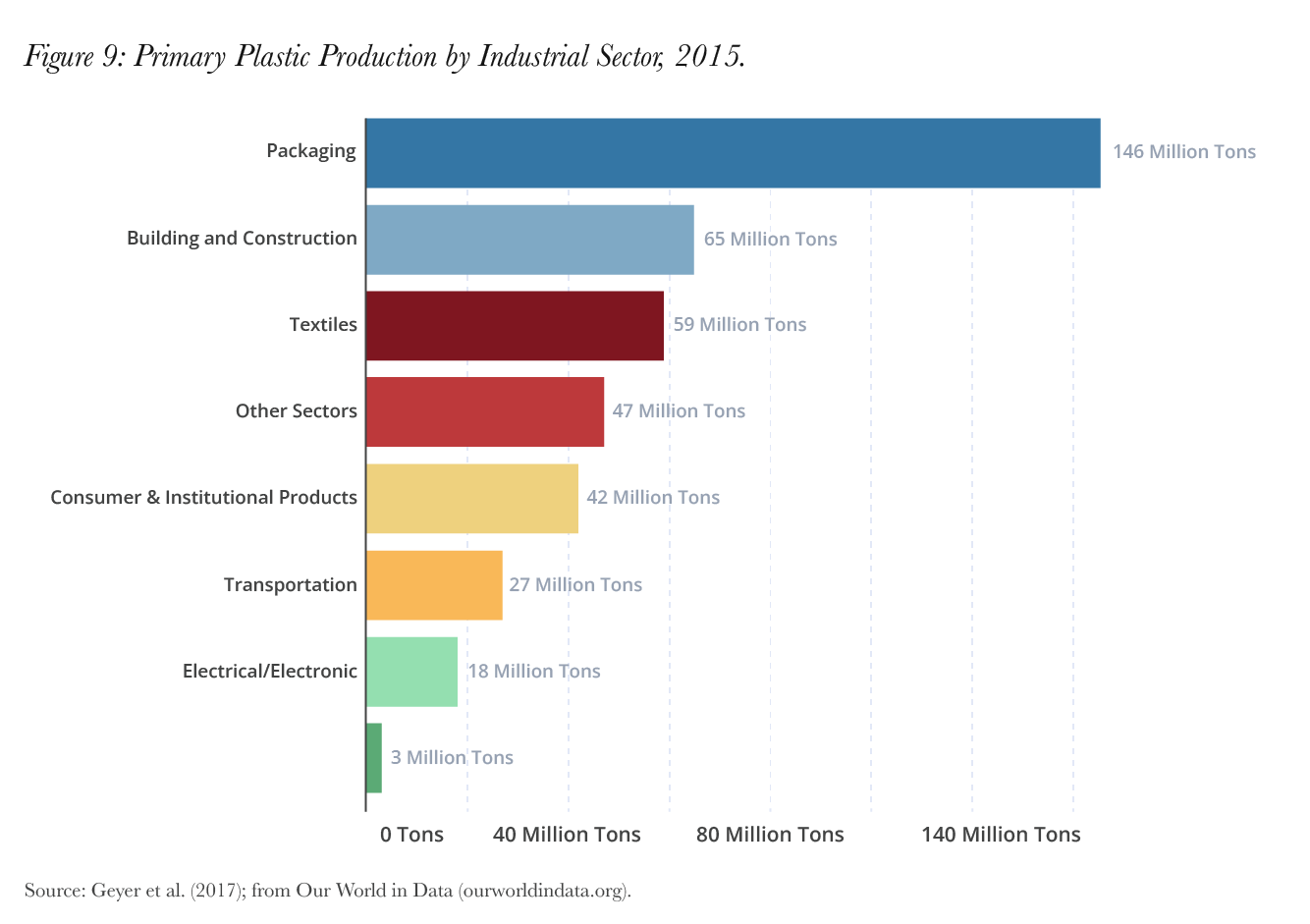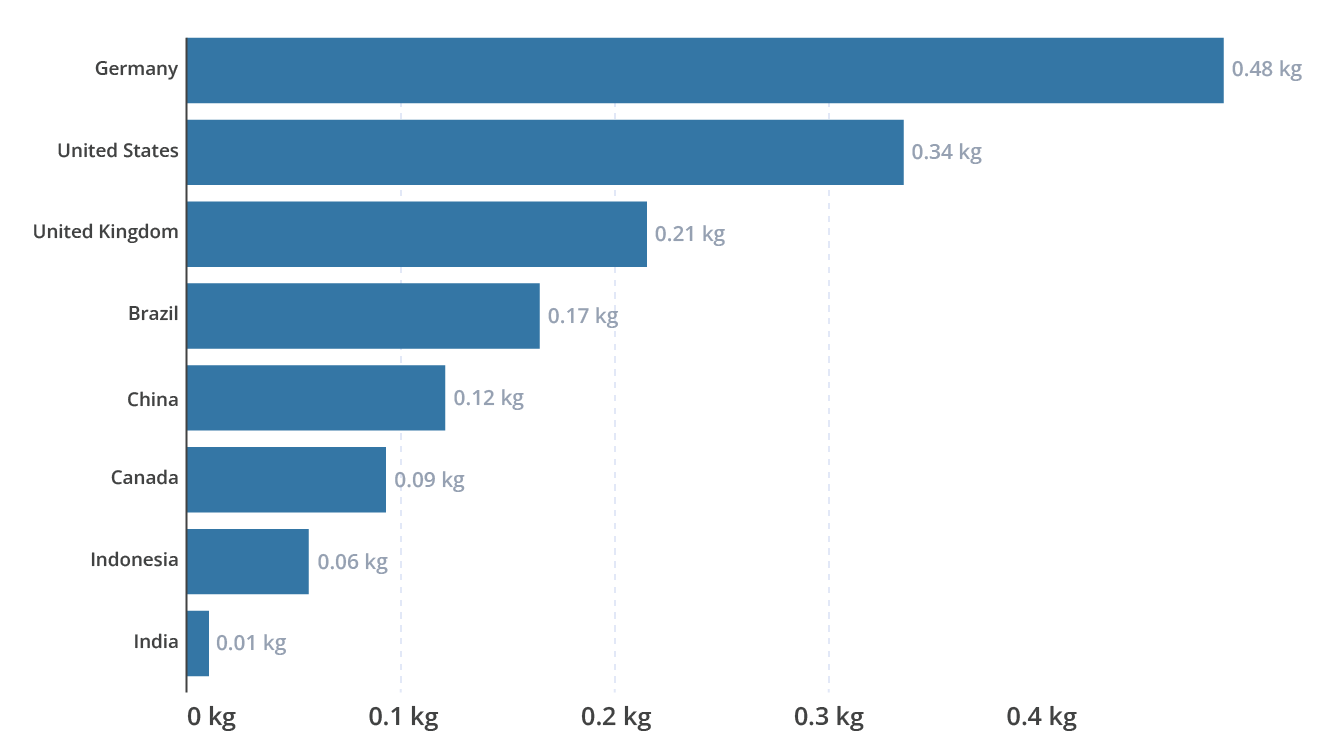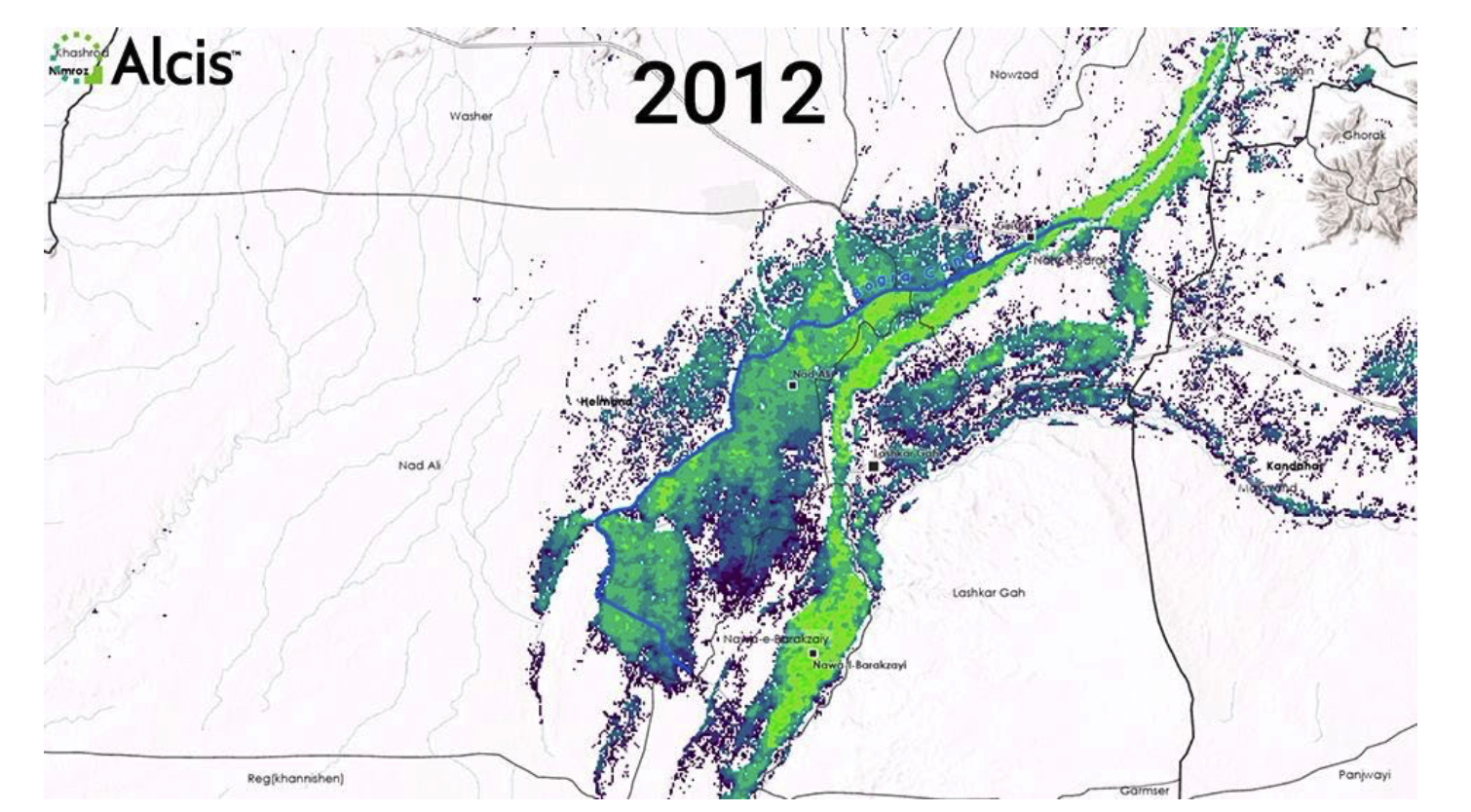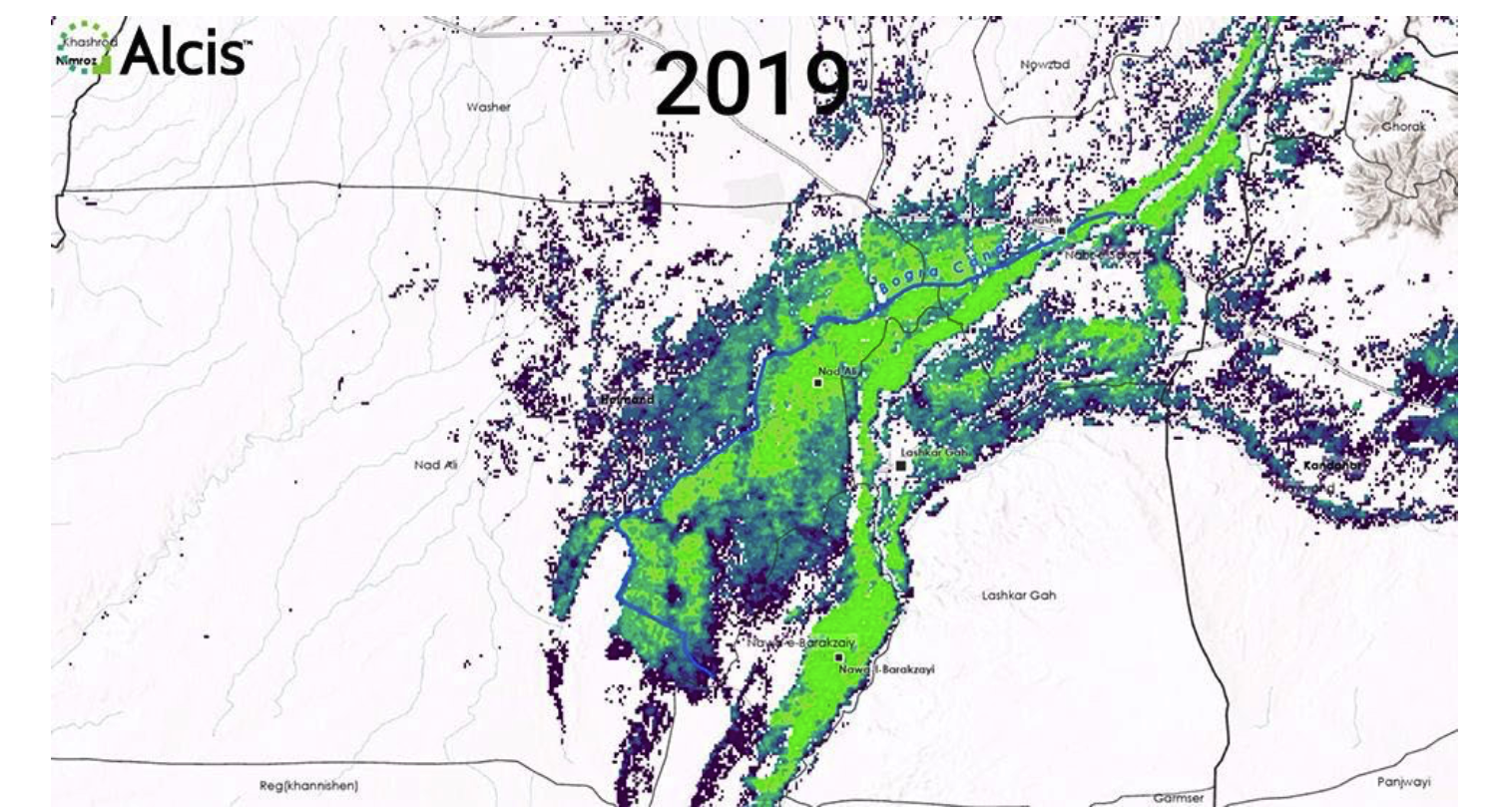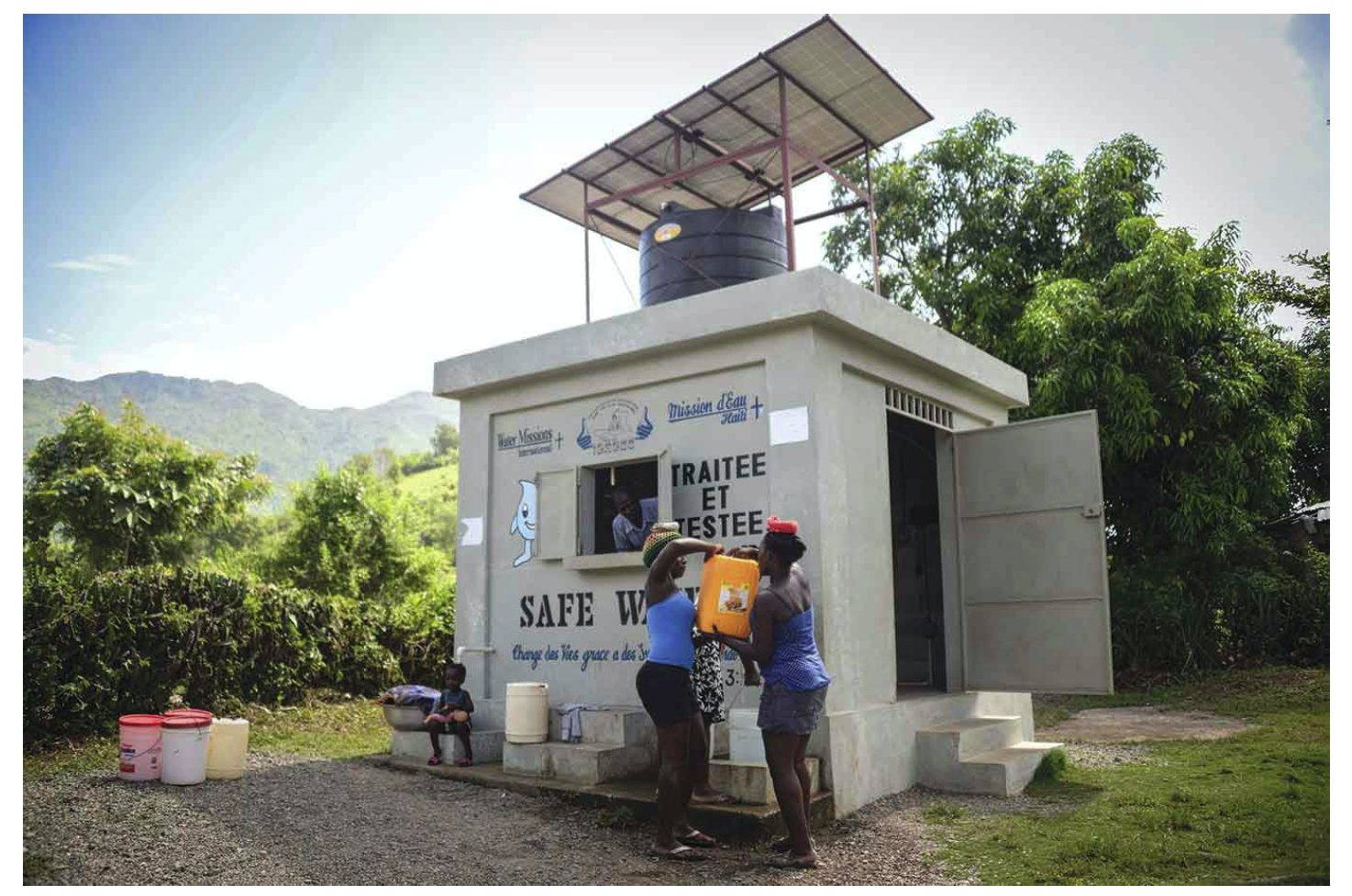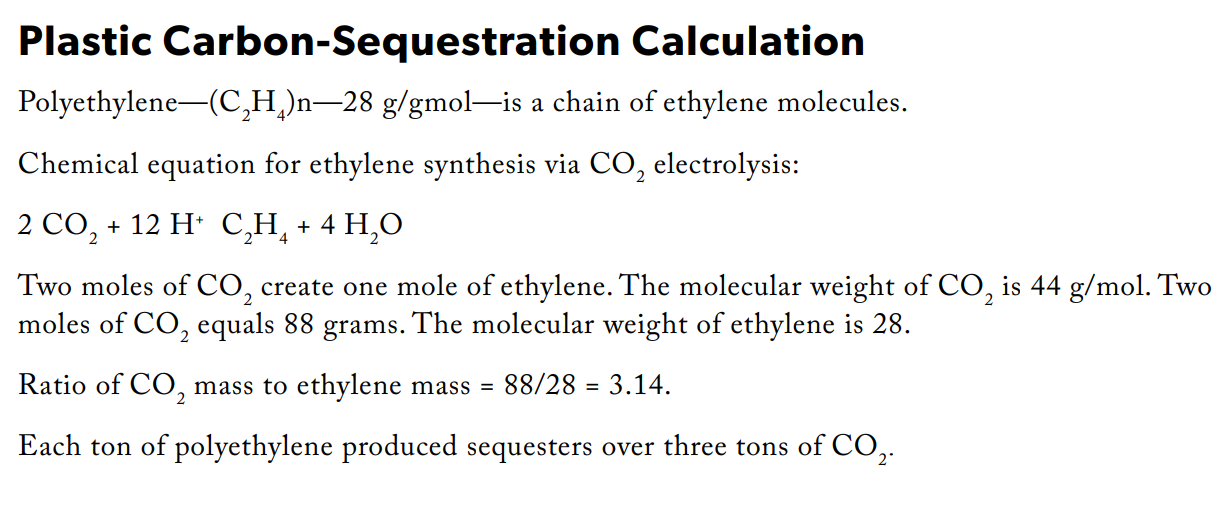Introduction
What would it be like if we were able to consume vastly more energy? Over the past several decades, industry has mainly focused on increasing energy efficiency, not on finding new productive uses of more energy. Attention to energy efficiency is what the market demands when energy costs are nontrivial, when supply shocks can cause them to suddenly spike, and when consumers are conscious of the environmental consequences of burning fossil fuels.
Policymakers, too, have focused on energy efficiency over energy abundance, through policies like Corporate Average Fuel Economy (CAFE) standards for cars and bans on sales of incandescent light bulbs. To be sure, some of these energy efficiency policies make sense, but they have not been balanced by an effort to create true energy abundance. Whereas the chairman of the Atomic Energy Commission in 1954 spoke of energy “too cheap to meter,”1US Atomic Energy Commission, “Remarks Prepared by Lewis L. Strauss, Chairman, United States Atomic Energy Commission, for Delivery at the Founders’ Day Dinner, National Association of Science Writers, on Thursday, September 16, 1954, New York, New York,” September 16, 1954, https://www.nrc.gov/docs/ML1613/ML16131A120.pdf. today’s politicians at best speak of new energy technologies as a way of merely replacing fossil fuels with carbon-free alternatives.
Climate change, however, gives us an opportunity to rethink energy technology. Recent cost reductions in wind- and solar-energy production have created a wave of optimism. They show that costs can come down quickly with adequate scale. If they continue, or if similar cost declines are possible with advanced nuclear or geothermal technologies, we could find ourselves somewhere most of us never expected: in a world with cheap energy, free from international supply shocks, and with limited environmental incentives to conserve. We call an extreme version of this scenario “energy superabundance.”
If our society remains suspicious of high energy expenditures, at least part of the reason is a lack of vision of what we might realistically do with superabundant energy. This paper aims to supply that vision. Our hope is that by examining the new possibilities that arise when energy becomes much more available than today, we can produce a shift in mindset. While today’s energy sources have environmental costs, we can focus on those costs narrowly while still viewing energy abundance as a goal worth striving for.
Ultimately, our goal in promoting abundant energy is faster economic growth and higher standards of living. The relationship between economic growth and energy consumption runs in both directions. Richer countries demand more energy in virtue of being wealthier and therefore able to afford more energy. But careful econometric research has shown that causality runs the other way as well: higher energy consumption directly increases economic growth.2Ansgar Belke, Frauke Dobnik, and Christian Dreger, “Energy Consumption and Economic Growth: New Insights into the Cointegration Relationship,” Energy Economics 33, no. 5 (2011): 782–89. Cheap energy decreases the cost of all the goods and services we consume today that use energy in their production. But more importantly, it also enables us to produce more and new goods and services in ways that are only economical when energy costs are low.
Figure 1. World Primary Energy Consumption
Source: bp Statistical Review of World Energy 2021.
Figure 2. Primary Energy Consumption, Selected Countries
Source: bp Statistical Review of World Energy 2021.
How should we define superabundance? Any definition will be somewhat arbitrary. In 2019, humanity consumed 581.5 exajoules of primary energy.3Statistical Review of World Energy (BP, 2021), 70th edition, https://www.bp.com/content/dam/bp/business-sites/en/global/corporate/pdfs/energy-economics/statistical-review/bp-stats-review-2021-full-report.pdf. Primary energy is energy in raw form, before conversion through any human process. Electricity is considered to be secondary energy, and the fuel that is used to generate it is considered primary energy. For forms of electricity that are not generated via fossil fuels, BP and other organizations that track energy statistics impute primary energy based on a conversion factor equivalent to the rate at which fossil fuels generate electricity. “Updated Methodology for Converting Non-fossil Electricity Generation to Primary Energy,” BP.com, accessed November 22, 2021, https://www.bp.com/content/dam/bp/business-sites/en/global/corporate/pdfs/energy-economics/statistical-review/bp-stats-review-2021-methodology-for-converting-non-fossil-fuel-primary-energy.pdf. If continually drawn at a constant rate, this annual energy consumption is equal to 18.4 terawatts of power, or 2.4 kilowatts (kW) per person. In the United States, Americans consumed 94.90 exajoules for a continuous rate of 3.0 terawatts, or 9.2 kW/person.4“BP Statistical Review of World Energy.” According to the US Energy Information Administration, the United States consumed 105.8 exajoules, a continuous rate of 3.4 terawatts, or 10.2 kW/person. “Monthly Energy Review,” US Energy Information Administration, August 26, 2021, https://www.eia.gov/totalenergy/data/monthly/index.php. In 1979, the United States consumed 10.8 kW/person, 18 percent more than it does today;5“BP Statistical Review of World Energy.” According to the Energy Information Administration, 12.0 kW/person. US Energy Information Administration, “Monthly Energy Review.” this decline broadly corresponds with the period Tyler Cowen has called the Great Stagnation.6Tyler Cowen, The Great Stagnation: How America Ate All the Low-Hanging Fruit of Modern History, Got Sick, and Will (Eventually) Feel Better: A Penguin eSpecial from Dutton (Penguin Group US, 2011). Iceland consumed 20.5 kW/person in 2019, over twice US consumption, while Qatar topped the chart with 21.6.7“BP Statistical Review.” If we wanted the entire planet to achieve Iceland-level energy use, this would require going from 18.4 terawatts to 158 terawatts of continuous power output, nearly an order-of-magnitude increase. This is about the rate of increase in human primary energy consumption over the last century, which has corresponded with rapid economic growth and higher living standards. Yet even this step forward in energy consumption would merely bring the rest of the world to where Iceland was in 2019. As a working definition, we consider a society to have superabundant energy if it consumes 40 kW/person, about twice Iceland’s continuous power draw (see figures 1 and 2).
A recent meta-analysis estimated that long-run price elasticity of demand for energy is −0.572, although many caveats apply.8Xavier Labandeira, José M. Labeaga, and Xiral López-Otero, “A Meta-analysis on the Price Elasticity of Energy Demand,” Energy Policy 102 (2017): 549–68. Elasticity varies among subcomponents of overall energy, is somewhat higher when considering panel versus time series data and micro models versus aggregate data, and is likely a bit higher still in the very long run.9Elasticities can also vary over the very long run. Fouquet estimates income and price elasticities for lighting, domestic heating, and passenger transport over a 210-year period in the United Kingdom. These energy services were much more income elastic and price elastic in the 1800s than they are today. Roger Fouquet, “Long-Run Demand for Energy Services: Income and Price Elasticities over Two Hundred Years,” Review of Environmental Economics and Policy 8, no. 2 (Summer 2014): 186–207. Yet if we naïvely take this number to be accurate, it implies that a 1 percent increase in the quantity of energy supplied would decrease energy prices by 1.75 percent. Assuming an isoelastic demand function, a doubling of supply would decrease the price of energy by 70 percent. Much larger amounts of energy will only be consumed when energy becomes very cheap.
Lower cost has implications for how energy will be used. As energy use is extended, it will be applied in uses where the marginal value of energy per joule is lower than previous uses. This is a consequence of the fact that markets allocate scarce resources to higher-valued uses first. On a per-joule basis, then, the value of energy will be driven lower and lower. Other things equal, cheap energy will drive an increase in energy intensity of gross domestic product, reversing a declining trend that has held both globally and in the United States since 1970.
Our belief is that, by the standards of the future, our energy consumption today, and therefore our standard of living, remains abysmally low. To achieve energy superabundance, we must go far beyond replacing existing use of fossil fuel use with carbon-free alternatives. We must increase energy production by at least an order of magnitude. We hope that our detailed exploration into the uses of superabundant energy will elevate this goal.
Transportation
Transportation is deeply bound up with energy costs. It takes energy to accelerate objects and to keep them moving in the face of drag and rolling resistance. Globally, transportation accounts for about 20 percent of global primary energy consumption.10“Transport,” BP Energy Outlook, accessed November 19, 2021, https://www.bp.com/en/global/corporate/energy-economics/energy-outlook/demand-by-sector/transport.html. In a world of superabundant energy, it will be one of the most explosive sectors. The number of miles traveled by both people and goods will increase. Additionally, demand growth could be increased by new efficiency-enhancing technologies that create a new Jevons paradox.
The Jevons Paradox and Electric Drivetrains
In his 1865 book The Coal Question, William Stanley Jevons wrote, “It is wholly a confusion of ideas to suppose that the economical use of fuel is equivalent to a diminished consumption. The very contrary is the truth.”11William Stanley Jevons, The Coal Question: An Inquiry concerning the Progress of the Nation, and the Probable Exhaustion of Our Coal-Mines (London: MacMillan, 1865), 103. Jevons claimed that improvements in fuel efficiency increase energy consumption: “An improvement of the engine, when effected, will only accelerate anew the consumption of coal.”12Ibid., 112.
Scholars have since debated whether and to what extent the Jevons paradox holds. The paradox occurs when an increase in energy efficiency leads to an increase in energy consumed. One survey finds that “rebound effects,” as they are called in much of the literature, averaged between 0 and 50 percent for a 100 percent increase in energy efficiency, short of a full Jevons paradox.13Lorna A. Greening, David L. Greene, and Carmen Difiglio, “Energy Efficiency and Consumption—the Rebound Effect—a Survey,” Energy Policy 28, no. 6–7 (2000): 389–401. On the other hand, other research finds very high rebound effects for freight transport between 1715 and the 1930s, passenger transport from the 1840s to the 1920s, and lighting during the nineteenth century.14Roger Fouquet, Heat, Power and Light: Revolutions in Energy Services (Edward Elgar Publishing, 2008). One interpretation is that for radical technological innovations, the rebound effect is greater than 1, implying the Jevons paradox holds, while for minor, incremental innovations, it does not.15Robert U. Ayres, “Resources, Scarcity, Technology, and Growth,” in Scarcity and Growth Revisited, edited by Michael A. Toman, R. David Simpson, and Robert U. Ayres (Taylor & Francis, 2005), 142–54.
The Jevons paradox and the rebound effect from energy efficiency are conceptually distinct from price elasticity of demand. When energy prices go down, people use more energy (the law of demand), and when energy-consuming goods and services get more energy efficient, people use those goods and services more intensively (leading to rebound effects and sometimes a Jevons paradox). When prices go down and efficiency goes up simultaneously, the quantity of energy consumed increases rapidly.
A possible source of a new Jevons paradox is the growing efficiency of electric drivetrains. The rapid improvement in performance and decline in the price of lithium-ion batteries is becoming a well-known story. Less well known is the improvement in electric motors, inverters, and power electronics.
Figure 3. Evolution of Power Output per Kilogram for Rotating Machines
Motor power density has been improving for over 100 years (see figure 3). Power density is critical in transportation applications. First, higher power density implies smaller size and lower materials costs, which tend to reduce the cost of a good under mass manufacturing. Second, weight matters because smaller, lighter motors have knock-on effects on the design of planes, cars, and trucks. For a consumer goods example, the size of hair dryers decreased dramatically from the 1960s to today due to the development of more power-dense motors (see figure 4).
Figure 4. One of the First Portable Hair Dryers
Source: “H is for … Hair Dryer!,” Museum Collections Blog, August 8, 2012, https://museumstrathroycaradoc.wordpress.com/2012/08/08/h-is-for-hair-dryer/.
Figure 5. Inverters Have Also Seen Huge Price Improvements
Inverters convert power between alternating current (AC) and direct current (DC). They are required since motors typically run on AC but batteries store electricity in DC. Inverters have seen an order-of-magnitude price decrease over the last 20 years (see figure 5). Inverters are more efficient as well. Tesla Motors pioneered the use of silicon carbide inverters, which can be 99+ percent efficient. These new designs are spreading rapidly to other cars, planes, and e-bikes.
Increasing efficiency in motors and inverters has a significant impact on vehicle design. Besides the improvement in distance per watt-hour, waste heat decreases dramatically. An inverter improvement from 98 percent to 99 percent is trivial for range, but waste heat halves. Cooling system cost, size, and complexity can decrease.
Improvements in batteries, motors, inverters, and other power electronics allow new vehicle designs that decrease operating costs, improve service life, and reduce maintenance costs. Consumer Reports estimates that a typical electric vehicle owner who does most fueling at home can save $800–$1,000 per year on fueling costs and $4,600 in maintenance costs over the life of the vehicle.16Benjamin Preston, “EVs Offer Big Savings over Traditional Gas-Powered Cars,” Consumer Reports, October 8, 2020, https://www.consumerreports.org/hybrids-evs/evs-offer-big-savings-over-traditional-gas-powered-cars/. This increased energy efficiency from modern electric drivetrains implies that electricity demand is set to greatly increase as electrification results in an explosion of transportation miles.
Human Transportation
In 1979, transportation engineer Yacov Zahavi proposed that people behave as if they have nearly fixed travel budgets for both money and time.17Yacov Zahavi, The “UMOT” Project (US Department of Transportation, August 1979). Given a variety of transport modes with different speeds and costs, travelers act as if they “solve” an optimization problem to maximize their spatial and economic opportunities. He found that daily travel times averaged from just above 1 to 1.5 hours per day, with an asymptote around 1.1 hours per day as higher-speed travel options became available. As a result, further increases in transport speed don’t serve to save time; they simply make more spatial and economic opportunities available. This finding was picked up by Italian physicist Cesare Marchetti, who used a wide range of anthropological evidence to show that travel time in human societies has always averaged about 1 hour per day.18C. Marchetti, “Anthropological Invariants in Travel Behavior,” Technological Forecasting and Social Change 47, no. 1 (1994): 75–88. Since then, 1.1 hours has become known as Marchetti’s constant (see figure 6).
Figure 6. People Across a Range of Societies Travel Around 1.1 Hours per Day
Source: Andreas Schafer and David Victor, “The Future Mobility of the World Population,” Transportation Research Part A: Policy and Practice, 34, no. 3(2000): 171–205.
Marchetti’s constant implies that humans won’t bank the time savings from faster transportation and call it a day. The future of human transportation is likely faster and farther. Since energy use typically increases with both speed and distance, energy costs will play a major role in expanding the human transportation network. Lower energy costs increase human range. Similar considerations apply for irregular travel, not just daily commutes. When it takes an entire day to travel from New York to Sydney, Australia, trips will be infrequent. Trips would be more common if you could get there in less than an hour at a reasonable price.
Electric Airplanes
Modern air travel has become increasingly inconvenient. Between long security lines, lengthy boarding periods for large planes, and sprawling airports, city pairs that are between 100 and 500 miles apart often have similar door-to-door travel times by car as by plane. The travel-time stagnation that has occurred in this distance range creates a gap in the market that could be addressed by 6- to 19-passenger electric planes.
Electric planes can dramatically reduce door-to-door time by flying out of general aviation airports. Although the United States has over 18,000 landing facilities, 70 percent of domestic air travelers pass through fewer than 35 airports.19Sally A. Viken, Frederick M. Brooks, and Sally C. Johnson, “Overview of the Small Aircraft Transportation System Project Four Enabling Operating Capabilities,” Journal of Aircraft 43, no. 6 (2006): 1602–12. Only 22 percent of the population lives within 30 minutes of a major hub airport, while 94 percent lives within 30 minutes of a small community airport.20Ibid. Exploiting the long tail of airports in the United States would expand point-to-point service options, reducing door-to-door travel times for regional travel.
Energy use per passenger-mile on a fully loaded electric commuter plane is slightly better than on a single-occupant electric vehicle.21One upcoming electric commuter aircraft, the Eviation Alice, features a 506-mile range and can carry up to nine passengers with an 820 kWh battery. This works out to 5.55 passenger-miles per kWh. A Tesla Model 3 Performance gets 3.84 miles per kWh. “Aircraft,” Eviation, accessed April 28, 2022, https://www.eviation.co/aircraft/; Jon Hemmerdinger, “Eviation Changes Alice Design, Performance Specifications Shift,” FlightGlobal, June 29, 2021, https://www.flightglobal.com/airframers/eviation-changes-alice-design-performance-specifications-shift/144376.article; “Design Your Model 3,” Tesla, accessed April 28, 2022, https://www.tesla.com/model3/design; “Tesla Confirms New 82 kWh Battery Pack in Model 3, Thanks to New Cells,” Electrek, November 10, 2020, https://electrek.co/2020/11/10/tesla-model-3-82-kwh-battery-pack-new-cells/. Ticket prices will likely be lower than driving due to slightly lower fuel costs and much lower maintenance costs associated with electric motors. To make this update to our transportation system viable, we need not only new electric aircraft, but also support from the airspace system. NASA’s Small Aircraft Transportation System project focused on four key enabling technologies: higher-volume operations at nontowered/nonradar airports, en route procedures and systems for integrated fleet operations, lower landing minimums at minimally equipped landing facilities, and increased single-pilot performance.22Viken, Brooks, and Johnson, “Overview.”
Although electric planes can be as energy efficient as today’s cars, they will still increase total energy demand. As with other human transportation technologies, demand should increase as faster, more convenient travel makes more trips desirable. Trips that required a long weekend could become day trips or short overnights. Convenience and door-to-door speed will increase the number of passenger-miles traveled.
Vertical-Takeoff-and-Landing Taxis
Even more convenient than electric commuter airplanes are vertical-takeoff-and-landing (VTOL) aircraft using distributed electric propulsion (see figure 7). In 2016, Uber released a white paper that kicked off the recent investment boom in VTOL aircraft.23Jeff Holden and Nikhil Goel, “Fast-Forwarding to a Future of On-Demand Urban Air Transportation,” Uber Elevate, October 27, 2016. Technologies like distributed electric propulsion, autonomy, and denser batteries are needed to close the business case for these aircraft, but development is proceeding rapidly.
Figure 7. A Prototype VTOL Aircraft from BETA Technologies
VTOL aircraft require landing space similar to a large helipad. While a dense city can support several helipads, it may not make sense to devote the space for enough of them to make VTOL aircraft a practical means of transport within cities. They could make sense for suburbs, exurbs, and bedroom communities. It could be “land and ride” instead of “park and ride.” Much like how cars gave us the suburbs, VTOL aircraft could bring extensive exurbs that allow cheaper housing without long drives to work or play.
VTOL aircraft are energy hungry, particularly on initial ascent. Because of the need to be able to safely abort a final descent, energy reserves must be maintained to enable an extra ascent even at the end of the flight. Even an electric VTOL is less efficient than most cars and can carry fewer passengers. To mitigate some of the high energy requirements, some companies are working on concepts that require a short takeoff roll instead of true vertical takeoff. Another concept to mitigate the effect of high energy requirements on the design is to make the initial-ascent portion of the vehicle a separate stage that can detach from the passenger-carrying aircraft. With cheaper energy and better battery technology, these compromises and complications could become less necessary.
The speed of a VTOL aircraft allows for a significant improvement in travel times. Given Marchetti’s constant, miles traveled will increase as daily travel times remain stable. The increase in distance could be two to four times, depending on how congested traffic is and on the service route.
Hyperloop
Hyperloop is a concept where a pod containing passengers travels 700 miles per hour in a closed tube between stations. The speed is achievable because the vehicle rides on air bearings or magnetic levitation, eliminating rolling resistance from wheels, and because the system pumps air out of the tube to reduce air resistance. The concept was popularized by Elon Musk in a white paper released in 2013.24Elon Musk, Hyperloop Alpha, August 2013, https://www.tesla.com/sites/default/files/blog_images/hyperloop-alpha.pdf.
Hyperloop would be very efficient, almost halving energy per mile compared to other modes, and the marginal cost of a trip would be low. The transportation pattern for humans could completely change. Door-to-door time could decrease dramatically while throughput increases. Commuting, vacation, and shopping ranges for workers and consumers could expand by almost an order of magnitude. Commuting 350 miles to work would be no big deal, rapidly increasing energy use.
The success of the hyperloop depends on cheap tunneling technology that allows for inexpensive tubes that avoid surface rights-of-way. With the Boring Company, Musk continues to develop technology to reduce tunneling costs. SpaceX sponsors annual hyperloop-pod competitions to support the technology.
Supersonic Flight
An aircraft is said to fly supersonically when it travels faster than the speed of sound, which at the altitudes that aircraft usually fly at is around 660 miles per hour. Faster aircraft generally use more fuel than slower aircraft of the same size because they have to overcome greater drag forces. In turbulent flow, drag is roughly proportional to velocity squared, although in practice the scaling is not that bad because high-Mach aircraft cruise at higher altitudes through less dense atmosphere.
If energy costs were low, most other aspects of aircraft economics would favor higher speeds. A given airframe can fly more segments per day if each segment takes less time. This enables an airline to make more money on the fixed-capital expense of the airframe. In addition, crew costs per passenger-mile traveled go down when flights are faster. Catering costs also go down when flights move from two meal services to a single snack service. Maintenance costs for aircraft are usually incurred by the flight-hour, not by the flight-mile, although initially the costs per flight-hour will likely be higher for supersonic engines.
Faster flight, then, trades higher energy intensity for higher revenue and potentially lower operating costs. It’s notable that since the introduction of jet aircraft, slower propeller airliners have all but disappeared. It’s essentially impossible to book a cross-country ticket today on a propeller aircraft because it is costlier to offer slower service, which nobody wants in the first place.
With cheap, superabundant energy, using more energy to increase revenues and lower nonenergy costs would become even more attractive. By using superabundant clean electricity and aqueous chemistry to make net-zero-carbon-emission fuel from atmospheric CO2, fuel prices would fall well below today’s fossil jet fuel price. It’s possible that all long-haul flights would then be moved to supersonic aircraft.
For conventional aircraft types, the benefits of higher cruise speed significantly taper off above Mach 5 (around 3,300 miles per hour). If we are assuming aircraft have to operate under today’s airspace rules and out of today’s airports, the faster cruise segment starts to be dwarfed by the time cost of taxi, takeoff, approach, and landing.
Suborbital Point-to-Point Travel
Using new modes of suborbital travel, like SpaceX’s proposed use of the Starship launch system to take passengers from New York to Shanghai in 39 minutes, could allow the benefits of speed to continue to accrue above Mach 5.
The atmosphere makes flying at high speeds difficult and expensive. Air resistance increases fuel usage and the amount of heat an aircraft must handle. By flying above most of the atmosphere, this problem of high-speed travel can be avoided. This solution comes with additional problems including safety—the safety profile of rocketry is far worse than today’s airline travel—and higher energy consumption. A rocket must expend large amounts of energy to travel above Earth’s atmosphere. Once in space, it can reach velocities of thousands of miles per hour. Flights that take 15 hours on a 747 could happen in an hour on a point-to-point rocket.
Today’s Starship and associated Super Heavy booster designs use about 1,066 tons of liquid methane and 3,734 tons of liquid oxygen per launch.25The booster holds 3,600 tons, while the Starship itself can hold 1,200 tons combined. The Raptor engine that powers both systems uses a 78:22 ratio of oxygen and methane. Ramish Zafar, “SpaceX To Start Building Starship Booster Prototypes This Week States Musk,” Wccftech, September 1, 2020, https://wccftech.com/spacex-starship-booster-musk-week/. Other point-to-point technologies will likely use the same fuels. The energy embodied in the Starship stack’s methane alone is over 16,000 megawatt-hours (MWh). Assuming the methane is made synthetically using our newly abundant sources of electricity, the energy cost would be even higher. Compared to a 747, a flight from Los Angeles to Sydney could use about 40,000 MWh of energy instead of about 2,000 MWh.26A 747 burns about 1 gallon per second while cruising, or about 48,600 gallons for the 13.5 hours between Los Angeles and Sydney. “How Much Fuel Does the Jumbo Jet Burn?,” FlightDeckFriend.com, January 5, 2017, https://www.flightdeckfriend.com/ask-a-pilot/how-much-fuel-does-a-jumbo-jet-burn/. At 37.1 kWh/gallon, 48,600 gallons amounts to about 1,800 MWh.
On airplanes, longer flights use more fuel, but fuel usage is roughly constant on all suborbital point-to-point flights. The longer the flight, the more relative advantage going through space has. Today, air travel uses about 3 percent of global primary energy.27Before the pandemic, aviation fuels accounted for 7.5 million barrels per day. “Jet Fuel Demand Gets a Thrashing until 2026,” Bloomberg, November 4, 2020, https://www.bloomberg.com/professional/blog/jet-fuel-demand-gets-a-thrashing-until-2026/. This is equivalent to about 16.76 exajoules per year. Increasing the energy consumption of a decent portion of flights 20-fold would boost primary energy usage significantly. Faster flights could also increase demand for travel, and demand for travel would also grow with general economic growth associated with energy abundance. In 2050, we may use as much energy for long-distance travel as we use today for all purposes.
Cargo Transportation
Cargo transportation is intertwined with all aspects of production and consumption in our economy. We benefit not only from more ton-miles, but from more convenient, reliable, and faster service. All of these different aspects of cargo transportation entail higher energy use, and therefore we expect this sector’s total energy use to greatly increase as energy becomes denser and more abundant.
Businesses benefit from cheap cargo transportation because it means that production can be done where and in a manner in which it is most efficient. There was a social media firestorm when posters realized that pears grown in Argentina are sometimes shipped to Thailand for packing, and then back across the Pacific to the United States for consumption. As energy becomes more abundant, we can look forward to even higher goods mileage as businesses use the cargo transportation networks to squeeze costs and deliver ever cheaper products to consumers.
Customers have a high preference for having goods move directly to them instead of being aggregated into slower modes. Across the transportation spectrum, lower energy costs and better technology force mode shifts into higher energy-intensity options that provide point-to-point service. Businesses are also willing to pay a premium for more reliable or flexible service, which tends to have higher energy intensity.
Finally, all else equal, people prefer cargo transportation options that are faster. As energy becomes more abundant, prices will drop for faster modes, inducing a shift toward them and away from slower modes. This will increase the total energy intensity of the sector.
Last-Mile Deliveries
Deliveries to specific addresses are expensive. Big-box stores like Walmart reduce their transportation expenses by operating giant distribution centers. “Last-mile” deliveries use much more labor and many more vehicle-miles per delivery. As a result, today many of us go to Walmart and drive our goods home.
Battery-electric delivery bots change the economics. Because of the reduced need for labor and the efficiency of electric powertrains, bots enable deliveries to become cheaper than driving to the store. Delivery vehicles range from sidewalk bots to full-size cars or trucks. The smaller and slower the machine, the easier it is to bring to market.
Sidewalk bots are the most mature category. They travel a few miles per hour, delivering about one grocery bag’s worth of goods. The energy a vehicle carries is the mass times velocity squared. A car going 40 mph has about 10,000 times the kinetic energy of a forty-pound sidewalk bot traveling 4 mph. The slow speed means the stakes for crashes are lower, with a fatality rate approaching zero. Automation is simpler. The bot trundles around on its own, it uses tried-and-true short-range sensors, and a remote operator only intervenes if the bot signals confusion. Startups like Starship have millions of deliveries under their belt already. The cost is a few dollars per delivery and will fall as bots improve. Slow speed and small size limits range, meaning sidewalk bots are great for food deliveries from nearby restaurants.
The next size up is bike-lane bots weighing around 100 pounds and traveling 10–15 mph. They have more range and bigger payloads but are further from full commercialization. The difficulty of automating them is still orders of magnitude less than that of automating a highway-speed car. Startups like Nuro have small car-sized bots that travel 25–30 mph and weigh thousands of pounds. Then, of course, there are the flying delivery drones for when you want a burger from the place across town.
The lower cost of delivery means dramatically more trips. Instead of one trip a week to the grocery store, you might have groceries or food delivered for every meal. “Dark” kitchens that cook food only for pickups and delivery can become close to cost-competitive with home cooking when paired with delivery bots.28Nicholas Upton, “UBS Lays Out Potential Food on Demand Futures,” Food on Demand, July 13, 2018, https://foodondemandnews.com/07132018/ubs-lays-out-potential-food-on-demand-futures/. Instead of buying 10 items once a month at Walmart, they can be delivered individually from a neighborhood bot hub.
Wheeled bots are efficient, getting about 10 times the miles per kWh as a Tesla.29Xuesu Xiao and William L. Whittaker, “Energy Considerations for Wheeled Mobile Robots Operating on a Single Battery Discharge,” Robotics Institute, Carnegie Mellon University, August 2014, https://www.ri.cmu.edu/pub_files/2014/8/TR-14-16.pdf. But they are less energy efficient than an electric delivery van on a schedule. Flying bots are less efficient still. Overall, energy use will increase as the number of trips, the number of empty legs, and distances increase. According to the Bureau of Transportation Statistics, 45 percent of trips Americans take are for shopping and errands, making this a significant category and potentially saving many lives.30“National Household Travel Survey Daily Travel Quick Facts,” Bureau of Transportation Statistics, May 31, 2017, https://www.bts.gov/statistical-products/surveys/national-household-travel-survey-daily-travel-quick-facts. Consumers will get part of The Jetsons’ future with food and goods on demand. Vehicle-miles traveled will skyrocket from bots, but they will mostly be on quiet roads, traveling at lower speeds and away from full-sized vehicle traffic. Cities will have to learn to accommodate many more trips.
Electric and Autonomous Trucking
Scale and specialization reduce the price and increase the quality of goods and services. Most goods that have seen rapid cost declines and improving quality have highly concentrated production. Yet some goods, like manufactured homes or commercial kitchen hoods, have a suboptimal scale in their production because of high transportation costs. Lower transportation cost from the electrification of drivetrains and automation makes larger-scale production feasible, which justifies investment in more specialization.
Trucks already dominate domestic shipping by value, carrying $10.4 trillion of the $14.5 trillion shipped domestically in 2017.31US Census Bureau, “Geographic Area Series: Shipment Characteristics by Origin Geography by Mode: 2017 and 2012,” Commodity Flow Survey (2017), https://data.census.gov/cedsci/table?hidePreview=true&tid=CFSAREA2017.CF1700A01. Trucks work on customers’ schedules, and there are more roads than rails or rivers. Modern manufacturing systems like Lean and Toyota Production System rely on trucks’ flexibility.
Between fuel and maintenance cost reductions, electrification alone can reduce the cost of trucking by 10 to 20 percent. Automation can remove another 40 percent of costs, for a total cost reduction nearing 60 percent per mile.32For a breakdown of trucking costs, see Jim Endres, “Want to Optimize Your Fleet? Know Your Average Trucking Cost per Mile,” Paragon, accessed November 20, 2021, https://www.paragonrouting.com/en-us/blog/post/want-optimize-your-fleet-know-your-average-trucking-cost-mile/. Automation will not eliminate all labor at once, but technology will digitize other jobs like managing load distribution, managing on-site customer relationships, and performing preventive maintenance inspections over time. Capital costs and insurance will dominate the remaining costs. They too have room for further improvement with better safety from automation and declining prices of batteries and motors.
Electrification makes existing freight on trucks more efficient, both in absolute terms and relative to trains, where fuel is a very small percentage of total costs. As the cost of trucking falls, more cargo will switch from rail to truck. Since cargo on trucks will still be twice as energy intensive as cargo on trains, that shift will tend to increase total energy consumption. Industries with low-value-density products will be able to consolidate manufacturing, increasing their distance from markets and creating more trucking demand. Demand for less-than-truckloads (LTLs) will increase as cheaper trucking allows more trucks to run without full loads. Truck ton-miles will increase, and overall truck miles will go even higher.
Electrification paired with automation could increase shipping energy usage several times. LTLs, train-to-truck switching, and reorganization of goods-producing industries around decreased transportation costs drive the increase. Trucking makes up about 6 percent of primary energy use in the United States, making any gains significant.33“Use of Energy for Transportation in Depth,” US Energy Information Administration, accessed November 20, 2021, https://www.eia.gov/energyexplained/use-of-energy/transportation-in-depth.php.
The biggest impediment to trucking growth is road congestion. In the short term, congestion taxes can increase truck throughput if cars have more elastic demand. Longer-term solutions like a transportation network made of underground tunnels can dramatically increase the throughput of goods.
Electrified Air Cargo
Electric and hybrid-electric cargo planes are poised to serve “middle mile” logistics. A Beaufort, South Carolina, shrimp fisherman might want to sell his fresh catch to evening diners in Charlotte, North Carolina, or Greenville, South Carolina, but it takes too long to drive. Small electric cargo planes could make the delivery on time at a cost significantly less than current air freight. The market for air freight is highly elastic. Halving the price might increase demand three times.34One estimate of the long-run price elasticity of air freight in the United States is −5.6. Junwook Chi and Jungho Baek, “Price and Income Elasticities of Demand for Air Transportation: Empirical Evidence from US Airfreight Industry,” Journal of Air Transport Management 20 (2012): 18–19.
Proposed cargo planes are fully electric aircraft, hybrid-electric aircraft that include an engine to charge the batteries, or VTOL aircraft that can move goods from places other than the airport. Energy density is the primary constraint to longer distances and heavier payloads. Any mode shift to air freight dramatically increases energy use per ton-mile.
Airships
Airships are another technology that hasn’t yet matured. Airships face a difficult set of trade-offs. Simple structures like a spherical balloon have the lowest surface area per kilogram of payload, are the easiest to build, and are easier to control because all directions present the same wind resistance. But a spherical airship might have an order of magnitude more drag than a streamlined droplet/cigar-shaped one. Compromise shapes like flying saucers have middling aerodynamics and efficiency. Hybrid airships gain lift from both aerodynamics and static buoyancy, which can make them more efficient in flight, but they lose the capability to float when the engines are turned off. Nonrigid airships (blimps) are best for small payloads, but rigid airships (Zeppelins) are best for large ones.
Airships also have trade-offs in usefulness and cost. An airship with a 20-ton payload could land in a parking lot and act like a flying truck. But such small airships are expensive to build for the performance they provide. In ellipsoid-like shapes, volume (lifting capacity) increases much faster than surface area (drag, weight, and hull materials cost). Massive airships can have a much lower cost per ton than small ones, but they need special landing facilities and hangars. Like ships, trucks have to bring cargo to the airship and take it to the final destination.
Better electric motors, materials, and drone technology bring cargo airships closer to commercialization. Drone technology allows autonomous airships, lowering costs and increasing payload. Improved materials allow lighter, cheaper, and larger envelopes. Electric motors and inexpensive energy reduce weight and lower propulsion costs, allowing more design latitude. With better, denser portable energy technologies, airships can be smaller or have worse aerodynamics to facilitate other product goals, increasing customer value. Falling costs and wider design latitude bring airships closer to commercialization.
Large airships are far more energy efficient than conventional air freight but still more energy intensive than ocean shipping. If airships replace traditional air freight, then energy use will fall, but any shift in cargo from boats will dramatically increase energy usage.
Long-Term Trends
So far we have focused primarily on the abundance and cost of energy, not its density.35Energy density is the amount of energy stored in a system per unit of volume. Specific energy, energy stored per unit mass, is a closely related concept, and sometimes also colloquially referred to as energy density. Here we are referring to both concepts. Cheap electricity or electrofuels paired with today’s energy density will give us more trucks, tunnels, short-haul drones, and possibly airships.
But what if we could have access to higher energy densities, such as from portable nuclear reactor technology? Cheap and dense energy technologies would cause technologies like heavy-lift VTOL drones to eat the other modes. There would be swarms of VTOL drones carrying around packages, containers, and truck trailers. Ultimately, energy density will determine how much the energy intensity of transportation increases.
Agriculture
Changing consumer taste, LEDs, and software are changing how fresh vegetables and fruits are grown.
The typical maximum solar irradiance at Earth’s surface is 1 kW/m2, and the average energy over a day is around 6 kWh/m2. For the last 12,000 years or so, agriculture has worked by harvesting this energy directly with plants, laid out in a land-intensive manner. Traditional agriculture is, in one sense, very energy intensive, because plants don’t use all frequencies of light; the remainder is wasted. But the free nature of light from the sun has meant that we could afford to waste energy as well as use a lot of land.
New methods of agriculture are developing that trade higher energy costs for lower land use. The methods range from greenhouses to indoor vertical farms that use only artificial light. The near-total control over the environment these techniques give to farmers means that they can not only increase yields but also turn out higher-quality products that consumers prefer.
Greenhouses
There is a good chance the fresh tomatoes you buy at the grocery store were grown in a greenhouse. Greenhouse-grown tomatoes make up almost a third of tomatoes consumed in the United States, and a higher percentage of the tomatoes in the grocery store.36Travis Minor, Sarah Baskins, and Jennifer K. Bond, “Imported Greenhouse Tomatoes from Mexico Illustrate the Growing Diversity in Fresh-Market Tomatoes,” Economic Research Service, US Department of Agriculture, May 1, 2019, https://www.ers.usda.gov/amber-waves/2019/may/imported-greenhouse-tomatoes-from-mexico-illustrate-the-growing-diversity-in-fresh-market-tomatoes/; Sarah Baskins, Jennifer Bond, and Travis Minor, “Unpacking the Growth in Per Capita Availability of Fresh Market Tomatoes,” Economic Research Service, US Department of Agriculture, March 2019, https://www.ers.usda.gov/webdocs/outlooks/92442/vgs-19c-01.pdf. Most of these tomatoes are grown in Mexico, where labor is cheaper.
Greenhouses allowing year-round production and more tomato varieties made the growth of greenhouse tomatoes possible. The controlled conditions create better-looking tomatoes that consumers prefer. Distributors and supermarkets also value the reliable, weather-independent supply. Field-grown tomatoes still dominate markets like tomato paste, where appearance and seasonality are not as important.
Historically, greenhouses were low-tech clear-tarp shade houses. New high-tech greenhouses that include supplemental lighting, heating, and water recycling systems are becoming popular. Sophistication increases as markets demand a higher-quality product that requires more controlled growing conditions. A shade house would not use any extra energy, but greenhouses utilizing supplemental lighting and heating do. High-tech greenhouse construction and operating costs fall as LED lighting prices decrease.
Greenhouse usage should continue to grow as costs fall and consumers demand more high-quality products.
Vertical Farming
Facilities growing plants using only artificial light (called “vertical farms” because of the arrangement of the plants) need high-quality structures, air conditioning, and a massive amount of equipment like LEDs, growing racks, and water recycling. Labor can be manual or robotic. While the yield of a greenhouse might be double that of a field, artificial-light-only operations can be an order of magnitude higher in yield than greenhouses with stacked growing trays.
Cannabis is the dominant artificial-light-only product. In Denver, nearly 4 percent of electricity is used to grow cannabis.37Grace Hood, “Nearly 4 Percent of Denver’s Electricity Is Now Devoted to Marijuana,” Colorado Public Radio, February 19, 2018, https://www.cpr.org/2018/02/19/nearly-4-percent-of-denvers-electricity-is-now-devoted-to-marijuana/. As with tomatoes, customers place a high value on product quality. Building off the success of indoor cannabis production, entrepreneurs are applying similar technologies to food production, usually in a vertical farm configuration. Today’s vertical farms produce leafy greens almost exclusively. These plants can reach maturity in less than 10 days, they need little light, and consumers place a high value on quality. Leafy greens make up less than 5 percent of the vegetable market, and vertical farms meet less than 2 percent of leafy green demand.38“AeroFarms,” May 24, 2021, https://www.aerofarms.com/wp-content/uploads/2021/05/AeroFarms-Analyst-Day-Presentation-May-2021-.pdf.
Costs for vertical farms are falling rapidly, leading to a rush of new vertical farming startups entering the market. The main drivers of cost decreases are increasing yields, falling electricity costs, and improvement in LED grow lamps. Improved economics have prompted growers to try to expand into other products like strawberries. The variance in energy required to produce a kilogram of different plants is massive. With current technology, a kilogram of strawberries will use roughly 2 times as much electricity as leafy greens. A kilogram of rice might use 30 times as much energy.39Exa Cognition, “The Future of Vertical Farming,” YouTube Video, 2019, https://www.youtube.com/watch?v=ESuzrY2abAw. As costs fall, new products will become economical.
Growing staple crops through vertical farming could someday become practical even though staples like rice and wheat are inexpensive to buy and energy intensive to grow indoors. Crop yield, LEDs, and solar panels all have a history of dramatic improvements.
Crop yields can grow if farmers optimize varieties for growing trays rather than fields. Plant genetics can be modified to produce a much higher edible-mass percentage because vertical farms have no pests or soil and have controlled temperatures. Indoor growing allows faster iteration. Indoor farms see more growing cycles per year, and they are staggered. Instead of experiments running in parallel, they can run successively and inform new experiments on a tighter loop.
Farm designers tune LED lights to the narrow frequencies plants use, reducing energy use and cooling demand. Plants use different colors of light depending on the growth stage, requiring the development of light “recipes.” Different light combinations alter growth and taste.
Because plants grow with the sun cycle, solar energy can provide a large portion of the power for these facilities. The falling cost of solar electricity reduces one of the main costs of the operations. If other technologies like nuclear or geothermal end up cheaper, facilities can split light schedules to create constant energy usage.
Vertical farms use water efficiently, allowing operators to site facilities in sunny regions with cheap land, solar power, labor, and scarce water resources. Countries like Morocco could become grain-production powerhouses.
Growing fruits and vegetables indoors slightly increases energy usage, but cultivating staple crops in vertical farms dramatically ups energy usage. Producing one kilogram of rice might use 150 kWh of electricity, and one analysis estimates almost 400 kWh/kg for wheat.40Senthold Asseng et al., “Wheat Yield Potential in Controlled-Environment Vertical Farms,” Proceedings of the National Academy of Sciences of the United States of America 117, no. 32 (August 11, 2020): 19131–35. It is unlikely that indoor staple crops would be competitive at those usage levels. Companies will attempt to alter the genes to increase the edible-mass fraction of the plant and improve energy efficiency. If we assume an improvement to 30 kWh/kg, growing all wheat and rice indoors would use double current global electricity production.
Alternative Animal Products
Today’s global meat substitute market totals a mere $5.5 billion, although it is growing rapidly at 7.6 percent annually.41Nitesh Chouhan, Himanshu Vig, and Roshan Deshmukh, Meat Substitute Market Size, Share & Growth, Allied Market Research, March 2022, https://www.alliedmarketresearch.com/meat-substitute-market. Although today’s market is made up almost entirely of plant proteins refashioned to appear more like meat, a number of companies are making progress toward growing animal cells directly in bioreactors from plant-based feedstocks.
Processing or manufacturing meat alternatives uses moderate amounts of energy. Feedstocks for meat alternatives are energy intensive to cultivate. Energy consumption will skyrocket if alternative animal products (or regular animals!) use feedstocks grown using greenhouse or vertical farming techniques.
Future Growth
Indoor farming will likely remain more expensive than field farming for decades—if it ever crosses over. Growth in the industry will focus on high-quality products that field-grown farming can’t match. Even if indoor-grown rice doesn’t become cost-competitive, consumers might pay a premium for products like arsenic-free brown rice or for produce that is untainted by pesticides.
While many have assumed automation is the future of indoor farming, current indoor-grown products point in a different direction. Cannabis growers buy less expensive rural land, erect simple metal buildings, and use migrant labor instead of robots. Greenhouses allow tomatoes to be grown in Mexico year-round and utilize local workers, avoiding seasonal migration. Indoor farms in rural areas will be more profitable than those in urban areas because of falling transportation costs, proximity to cheap electricity generation sources, and cheap land. More mature startups are touting the “one-day drive” market size from their facilities.
Consumer demand and cost reductions for 100 percent artificial-light facilities will determine how big the indoor farming market grows and how much is in greenhouses versus vertical farms. By substituting energy for land, water, and pesticides, these indoor techniques will enable the agriculture industry to greatly increase food production, security, and quality, if this is what consumers demand. Vertical farms simply go further on this spectrum than greenhouses do.
Water
Two percent of total energy in the United States goes to water purification, distribution, and treatment.42“Energy Efficiency for Water Utilities,” US Environmental Protection Agency, September 23, 2021, https://www.epa.gov/sustainable-water-infrastructure/energy-efficiency-water-utilities. Traditional water supplies are stressed worldwide, creating demand for technologies that enable new sources of fresh water. These technologies trade increased energy use for preservation of existing aquifers and settlement and development of land that wouldn’t be possible otherwise.
Desalination
The cost of desalinating water has decreased about 75 percent over the last 40 years, driven by better membranes for reverse osmosis as well as application of energy recovery devices.43Juan Miguel Pinto, “Energy Consumption and Desalination,” May 7, 2020, https://uh.edu/uh-energy/educational-programs/tieep/content/energy-recovery-presentation-2020-water-forum.pdf. Instead of being prohibitively expensive, it might only double the price of typical municipal water from surface resources. Desalination today uses about 10 kWh per 1,000 gallons, roughly four times the energy that distributing and treating surface water does. New technologies like electrodeionization could be about twice as energy efficient, and there may be more efficiency gains to be had by mimicking the biological processes by which mangrove plants and euryhaline fish extract freshwater from seawater.44“Desalinated Water,” Singapore Public Utilities Board, accessed November 21, 2021, https://www.pub.gov.sg/watersupply/fournationaltaps/desalinatedwater/.
Desalination will likely remain a niche water source in much of the rich world, but Africa and Asia need to greatly increase water supplies to support populations growing in size and wealth. For some countries, desalination is already a large and growing part of the water supply. In Israel, it already supplies more than half the water for households, agriculture, and industry.45Isabel Kershner, “Aided by the Sea, Israel Overcomes an Old Foe: Drought,” New York Times, May 29, 2015, https://www.nytimes.com/2015/05/30/world/middleeast/water-revolution-in-israel-overcomes-any-threat-of-drought.html. Singapore also relies heavily on desalination, as do island countries like Trinidad and Tobago.
Water Reclamation
Instead of being discharged, the loop around wastewater can be closed with reuse. Water utilities treat the wastewater with the same reverse osmosis process used in desalination. Reuse increases water supplies by using more energy and other inputs.
Water reclamation is popular in many of the same countries that are adopting desalination because it addresses the same fundamental problem of water scarcity. Israel is by far the leading adopter, reclaiming nearly 90 percent of its wastewater.46Arutz Sheva Staff, “Israel a World Leader and Innovator in Clean Technologies,” Israel National News, December 1, 2016, https://www.israelnationalnews.com/News/News.aspx/221104. Much of this reclaimed water is used for agriculture, although with advanced chemical, biological, and physical treatments, reclaimed water can also be made safe enough to drink.47Cecilia Tortajada and Pierre van Rensburg, “Drink More Recycled Wastewater,” Nature 577 (January 2, 2020): 26–28.
Condensing Water from Air
Desalinization typically requires large-scale facilities, plus a well or the ocean. A distribution system has to deliver water from the plant to users. Not all governments or regions can provide that degree of capital-intensive infrastructure. For those environments, water can be condensed from the air, using massive amounts of energy. One startup says its system uses 0.7 kWh/gallon, 70 times more than modern desalination.48“Home,” Genesis Systems, accessed November 21, 2021, https://genesissystems.global/. Uses for these systems are likely to be niche, but low energy costs mean they can be competitive with trucked water where both water and water infrastructure are scarce.
Materials
In many applications, cheaper energy can reduce the need for capital and labor. If electricity is too cheap to meter, why bother insulating a new house or air sealing it? Many industrial processes have extra steps to increase efficiency. Factories could simplify. While superabundant energy will change virtually all industrial processes, in this section we focus on the highest-volume materials.
Concrete Ingredients
Concrete is one of the most important construction materials on the planet, responsible for 8 percent of global carbon emissions. Most countries desperately need more roads and buildings. There may be reason to produce concrete’s key components, quicklime and sand, using more energy-intensive methods.
Quicklime
Quicklime is an important component of Portland cement, by far the most widely used cement in the world. Limestone is mined and then heated in a kiln to produce quicklime. The conversion to quicklime using fossil fuels to heat the kiln makes up the majority of CO2 emissions from concrete. Instead of mining limestone, we can make it from carbon dioxide, water, and calcium.
An example is a process developed by a startup called Heimdal.49“Heimdal,” Heimdal, accessed November 21, 2021, https://www.heimdalccu.com; Marcus Lima, “Launch HN: Heimdal (YC S21)—Carbon Neutral Cement,” Hacker News, August 2, 2021, https://news.ycombinator.com/item?id=28036927. It uses seawater and electricity to produce hydrogen, chlorine gas, calcium carbonate (limestone), sodium carbonate, and magnesium carbonate. The carbon dioxide in ocean water is undersaturated, meaning the amount of CO2 removed from the ocean to make limestone is absorbed back into the ocean from the atmosphere. The CO2 originally removed from the ocean is released back into the atmosphere when limestone is heated to manufacture quicklime, making the process carbon neutral. Over the long term, the process becomes carbon negative as concrete slowly absorbs CO2. Roughly 1 MWh of heat turns limestone into one metric ton of quicklime. Manufacturing limestone with this process uses about 2.5 MWh of electricity per metric ton, increasing energy use significantly compared with the approximately 0.01 MWh it takes to mine and process natural limestone.50BCS, Energy and Environmental Profile of the U.S. Mining Industry (US Department of Energy Office of Energy Efficiency and Renewable Energy, December 2002), https://www.energy.gov/eere/amo/downloads/itp-mining-energy-and-environmental-profile-us-mining-industry-december-2002. If energy is cheap enough, ideally around $30/MWh (assuming no carbon tax), synthetic limestone is competitive with mined limestone. The energy-price threshold would be higher in regions with poor transportation infrastructure. Making all quicklime from this process would use around 5 percent of current global electricity production, and demand for quicklime should only grow.
Sand
Most intrepid Internet readers have seen those viral articles about sand shortages. While sand is everywhere, construction uses, like concrete, need rough-grained sand. This sand is mostly in rivers and lakes, meaning it is limited and is environmentally destructive to mine. And we use a lot of sand, on the order of 50 billion tons per year worldwide. The United States uses 1 billion tons of construction-grade sand per year.51US Geological Survey, “Sand and Gravel (Construction),” Mineral Commodity Summaries, January 2021, https://pubs.usgs.gov/periodicals/mcs2021/mcs2021-sand-gravel-construction.pdf.
Sand from deserts is plentiful, but its grains are too small and smooth for use in construction. There is a solution: heat the sand until it starts melting and sticks together in clumps.52Frank Neumann and Manfred Curbach, “Thermal Treatment of Desert Sand to Produce Construction Material,” MATEC Web of Conferences, 2018, doi:10.1051/matecconf/201714901030. There is a lot of variation in energy usage depending on the mineral makeup of the sand, but 1 MWh/ton is not a terrible guess. The United States alone could use 4 percent of its primary energy demand to convert desert sand to construction sand for domestic use. Worldwide, 34 percent of today’s total energy demand would be needed to sinter enough fine-grained sand to alleviate the sand shortage, preserving river and lake habitats. Construction sand is cheap in places like the United States, where supply is plentiful. In Asia and Africa, where demand is growing, this technique might help meet demand. Making our sand usage less damaging would require cheap, abundant energy.
Steel
Steel is responsible for about 7 percent of global carbon emissions. Traditional blast furnaces use 0.77 tons of coking coal to produce a ton of steel from iron ore. The heating value of that coal is roughly 6 MWh per ton of steel. Using hydrogen (from electrolysis) and electricity instead of coal uses about 3.5 MWh of electricity per ton of steel.53Matthew Hutson, “The Promise of Carbon-Neutral Steel,” New Yorker, September 18, 2021, https://www.newyorker.com/news/annals-of-a-warming-planet/the-promise-of-carbon-neutral-steel. Coking coal is expensive, meaning if electricity prices and electrolyzer capital costs decline, the hydrogen process will become comparatively cheaper. Coal makes up about one-sixth of the cost of steel, so even with cheap energy, there will not be dramatic cost declines in steel prices that drive more consumption. Because the primary energy use will be about the same (it takes about 6 MWh of primary energy to produce about 3.5 MWh of electricity), total energy usage in steelmaking will mainly increase from economic growth that demands more steel.
A Swedish project called HYBRIT—Hydrogen Breakthrough Ironmaking Technology—has built a pilot plant that produces steel with hydrogen, and it is now working on a commercial-scale demonstration.54Ibid. Other, related processes for clean steel production include hydrogen plasma, molten oxide electrolysis, and electrowinning.55Ibid.
Plastics and Polymers
Chemical companies primarily manufacture plastics and polymers by forming long chains out of small molecules like ethylene and propylene. Feedstocks like ethylene are made by cracking ethane (a component of natural gas) or naphtha (a crude oil component) in massive chemical plants.
If electricity becomes cheap enough, atmospheric carbon dioxide may start competing with fossil fuels to provide plastic feedstocks. This will require a large amount of energy and will only be economical if electricity prices are quite low. If electricity prices were regularly less than $0.02/kWh, companies could produce feedstocks, like ethylene, from air, water, and electricity at competitive prices. Those products could be drop-in replacements suitable for existing chemical plants.
Plastics and polymers are a rapidly growing industry (see figure 8). Per capita usage in consumer economies and rich countries dwarfs that of the developing world (see figures 9 and 10), meaning demand will likely keep climbing as the developing world catches up. In a few decades, existing plastic production facilities will be a small fraction of total production. Chemical manufacturers would modify new plant designs to accommodate precursors electrofuel manufacturers can easily make.
Figure 8. Global plastics production, 1950 to 2015.
Source: Geyer et al. (2017); from Our World in Data (ourworldindata.org) Link: http://advances.sciencemag.org/content/3/7/e1700782.full.
Figure 9. Primary Plastic Production by Industrial Sector, 2015.
Source: Geyer et al. (2017); from Our World in Data (ourworldindata.org). Link: https://ourworldindata.org/grapher/plastic-production-by-sector.
Figure 10. Plastic Waste Generation Per Person, 2010.
Source: Jambeck et al. (2015); from Our World in Data (ourworldindata.org). Link: https://ourworldindata.org/grapher/plastic-waste-per-capita.
One interesting side effect of this scenario is that throwaway plastic consumption would sequester carbon dioxide for hundreds of years. The technologies of trash trucks and landfills are widely available and do not need cross-country coordination. If plastic consumption were about three billion metric tons per year, the industry would sequester cumulative global emissions in 150 years. Our great-great-grandchildren would have to bring the recycling signs out of storage and start drilling for fossil hydrocarbons again to prevent a global cooling catastrophe. We should let them know where we buried all the plastic in case they need it for feedstock.
The Coming Carbon Shortage
Once any materials manufacturing process using CO2 from the air becomes competitive, our tragedy-of-the-commons problem reverses. Each ton of polyethylene produced sequesters over three tons of CO2 (see appendix). Cement production would also be carbon negative. If these processes become economical, it becomes inevitable that we will have a carbon shortage in the atmosphere.
Once plastics and cement made from air, water, and electricity become profitable, they will not cede market leadership back to conventionally produced materials. Fossil fuels and other mined-materials industries face a constant requirement to adapt and innovate. Mining technologies are developed to unlock specific types of reserves. When those reserves run out, new technological investment is needed to unlock additional reserves. In a world of superabundant energy with ample atmospheric resources, it’s difficult to see that investment being made. Just as the Haber-Bosch process made mining bat guano for fertilizer obsolete, we won’t use mined materials to make plastics and cement once cheap energy becomes available.
Because so much of the world is poor, the amount of plastic and cement we use is a small fraction of our future use. Future supply produced by pulling carbon from the air will overwhelm existing sources of carbon. Whether this happens in 75 years or 750 years is hard to say, but the world could have to shift to taxing carbon removed from the air instead of taxing carbon released into the atmosphere.
New Cities
Climate, transportation, food, and water all limit city growth. Phoenix, Arizona, would be a small town instead of a metropolis without air conditioning, large water projects, and cars. Advanced transportation and water technologies, combined with low energy costs, allow new city sites and configurations.
Cities grow around the dominant transportation options of the time. Even if the neighborhoods are walkable, jobs and entertainment might be hundreds of miles away. They will only be minutes away via transportation technologies like VTOL aircraft or hyperloop. New cities and towns could form even with only electric commuter planes available.
Water does not have to be a constraint. Existing users claim almost all the rights for freshwater supplies. A new, large city could, like Israel, create its water supply from desalination, water recycling technologies, and water condensation from the air.
Over time, more people will live in these new towns, cities, and suburbs built around new technologies with higher per capita energy use. New places will have lower costs and compete with mature cities that have calcified rules and regulations that limit expansion.
Economizing on Infrastructure in the Developing World
Energy use is dramatically lower outside of industrialized countries. Not only are citizens poorer, but energy is more expensive due to lack of scale and high transportation costs.
To increase energy abundance in these countries, it is important to economize on infrastructure that requires the high state capacity and social trust that they lack. Different kinds of infrastructure require varying levels of coordination and consensus across society. Roads can exist at low levels of trust. Bandits with guns can maintain them. Energy infrastructure like pipelines and electric grids requires a large amount of capital and expertise to build. It cannot operate effectively without competence, adequate security, and collections. Theft and poor maintenance hamper pipelines and power grids, robbing capital needed for expansion and further maintenance.
This reality must be reckoned with. To quickly increase access to energy in the developing world, we need more energy innovations that can avoid using pipelines and grids.
Near-Term Technologies
Solar panels are already making an impact in many countries (see figures 11 through 13). Solar installation is within the capacity of even the smallest economies. Scale varies from giant farms to powering a single light. Maintenance is much simpler than for generators, allowing longer product lifetimes. One of the most striking applications is solar-powered water pumps for irrigation and cleaner drinking water. Water applications do not require batteries since water towers provide pressure, and irrigation can happen when it’s sunny outside.
Figure 11. Helmand, Afghanistan, before Widespread Solar Water Pumps
Note: Light green denotes best farming yields.
Figure 12. Irrigation Improves Yields across the Province
Source: Justin Rowlatt, “What the Heroin Industry Can Teach Us about Solar Power,” BBC, July 27, 2020, https://www.bbc.com/news/science-environment-53450688.
Figure 13. Solar Water Well, Treatment, and Storage
Source: Water Mission
When storage is needed, lithium iron phosphate (LFP) batteries should dominate the market. Declining costs, improving performance, patent expirations, and better material availability have catapulted LFP batteries for stationary storage applications.
Demand for stationary storage is growing so fast that learning curves will rapidly improve the cost of battery management systems, cooling, and other items within the pack. By 2030, it would not be surprising to see $50/kWh to $75/kWh battery packs paired with $200/kW solar panels. Emerging battery chemistries like sodium-ion could be even cheaper. Cost reductions like these would allow rich-world electricity prices and availability in remote villages.
Finally, electrofuel production powered by solar or wind provides a realistic alternative to electrification of transportation in countries with inadequate electrical infrastructure. Electrofuel facilities could run 10 hours a day on dedicated solar panels. This technology can plausibly be run and maintained in these regions and is competitive against high local fuel costs. The liquid fuels it produces will be available for vehicles, cooking, and heating.
Optimal Technologies
Solar and batteries can do a lot, but there are technologies with even higher potential. Many applications would benefit from higher power density and cheaper options for process heat.
One of the most promising technologies is miniaturized nuclear technology. Small reactors paired with technology like thermoelectric generators (TEGs) could allow distributed, high-power-density energy everywhere. NASA and the National Nuclear Security Administration recently developed a 10-kW prototype reactor in several years for less than $20 million.56Sean Potter, “Demonstration Proves Nuclear Fission Can Provide Exploration Power,” NASA, May 2, 2018, http://www.nasa.gov/press-release/demonstration-proves-nuclear-fission-system-can-provide-space-exploration-power. TEGs have seen theoretical improvements in the lab.57Chongjian Zhou et al., “Polycrystalline SnSe with a Thermoelectric Figure of Merit Greater than the Single Crystal,” Nature Materials, 2021, doi:10.1038/s41563-021-01064-6. These technologies still have many hurdles, but electricity without a grid would be a boon for the world.
The developing world can reach income and energy parity faster if it can leapfrog traditional energy infrastructure requirements with these and similar technologies.
The Far Future
Despite the great increases in output and well-being that could be achieved through superabundant energy, the outcomes we have described are still, in the grand scheme of things, only the beginning. They still, for the most part, assume levels of energy and power density achievable with near-term technologies.
In the long run, energy and power density can increase significantly. Eventually, we could have airplanes that never have to land and refrigerators that never need to be plugged in. Once our devices are self-powered by miniaturized onboard nuclear reactors—or even better technologies—our total primary energy consumption will increase dramatically.
Cities, too, could produce all the energy they consume. Without reliance on regional, national, or supernational energy grids, cities could become more autonomous, and human society more robust. Energy technologies have always played a significant role in geopolitics, and they will continue to reshape human affairs in the future, if only by removing the constraints of dependence.
Conclusion
Energy is intertwined with everything. Every physical thing is manufactured and transported with energy. Energy is embedded in our food and even our water supplies. Our cities and our infrastructure both use and facilitate the use of energy.
We are not close to an upper limit on energy consumption. As we have shown, although energy consumption per capita peaked in the late 1970s in the United States, there is plenty of room for growth. With superabundant energy, we would travel faster, experiencing more of the planet in our daily lives and over our lifetimes. Our goods would become cheaper. We could have more abundant building materials. And we would experience better health from more nutritious foods and cleaner water supplies.
The vision of superabundant energy we have laid out won’t happen soon without policy support. Policymakers have wrongly, in our view, focused on energy technologies narrowly from a pollution and carbon emissions perspective. Although pollution is damaging, the planet is warming, and these harms should be addressed, a better approach is to keep in mind energy technologies’ true potential. Instead of working to simply replace current energy consumption with energy from cleaner sources, we should figure out how to use new and cleaner energy technologies to radically increase human prosperity.
To achieve this level of energy abundance, we need to remove the obstacles to building in the physical world. Power plants and transmission lines continue to be plagued by red tape from environmental review requirements, the siting process, and veto players at the local, state, and federal levels. Transportation infrastructure that is needed to allow us to step into our newfound energy prosperity suffers from similar issues. Smart policies like congestion taxes that could increase throughput and therefore increase demand for transportation languish because of a lack of political will. A high-speed tunnel that would connect DC and Baltimore in 15 minutes is languishing in environmental review.58“Washington D.C. to Baltimore Loop Project,” Federal Infrastructure Permitting Dashboard, https://www.permits.performance.gov/permitting-projects/dc-baltimore-loop-tunnel-project. New aircraft types face regulatory obstacles at the Federal Aviation Administration.59Eli Dourado and Samuel Hammond, Make America Boom Again: How to Bring Back Supersonic Transport (Mercatus Center, October 27, 2016), https://www.mercatus.org/system/files/mercatus-dourado-supersonic-transport-v1.pdf.
The Nuclear Regulatory Commission was spun off from the Atomic Energy Commission in 1975. In the entire history of the agency since then, it has never approved a reactor license from start to finish, from initial application to beginning of operations. Without reform, the obstacles to miniaturizing nuclear technology to achieve a portable source of high-density power are significant.
In short, under business-as-usual, many of the possibilities we have laid out in this paper won’t happen for a long time. If we want them, we will have to seize them.



 The New York Times
The New York Times Forbes
Forbes Vox
Vox Stand Together
Stand Together VTDigger
VTDigger Nadia Asparouhova
Nadia Asparouhova Competitive Enterprise Institute
Competitive Enterprise Institute Dnyuz
Dnyuz